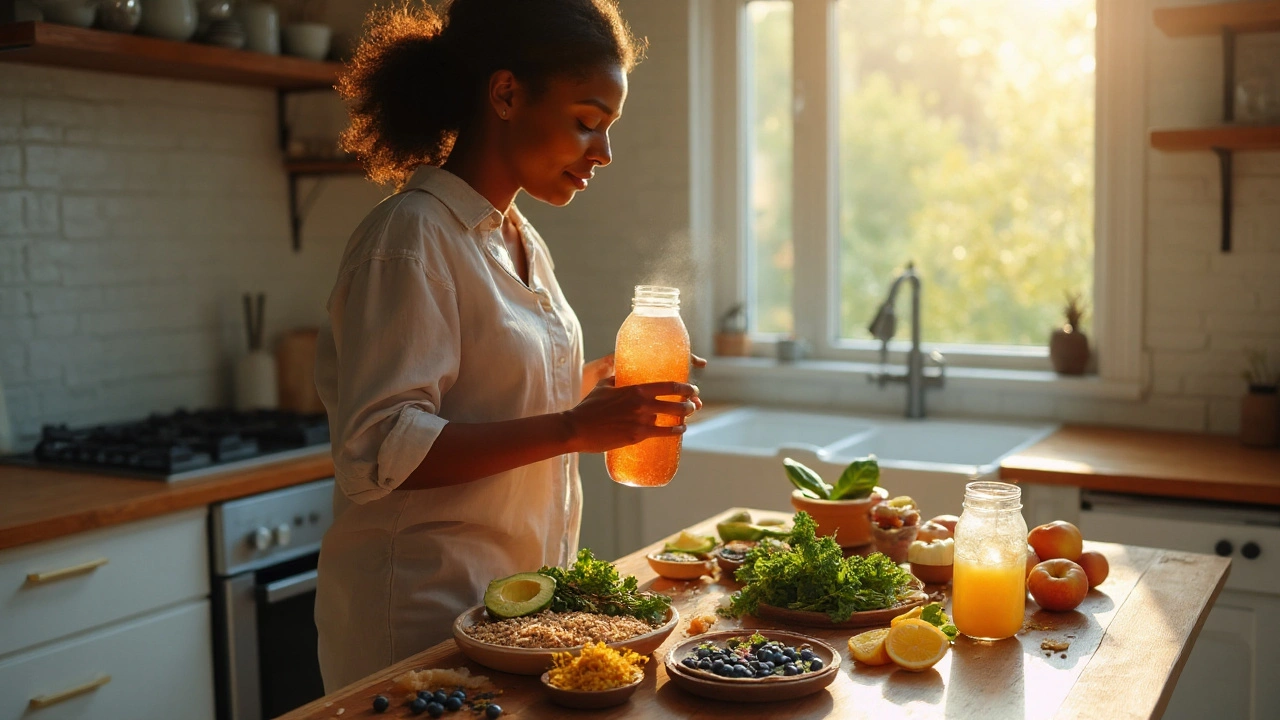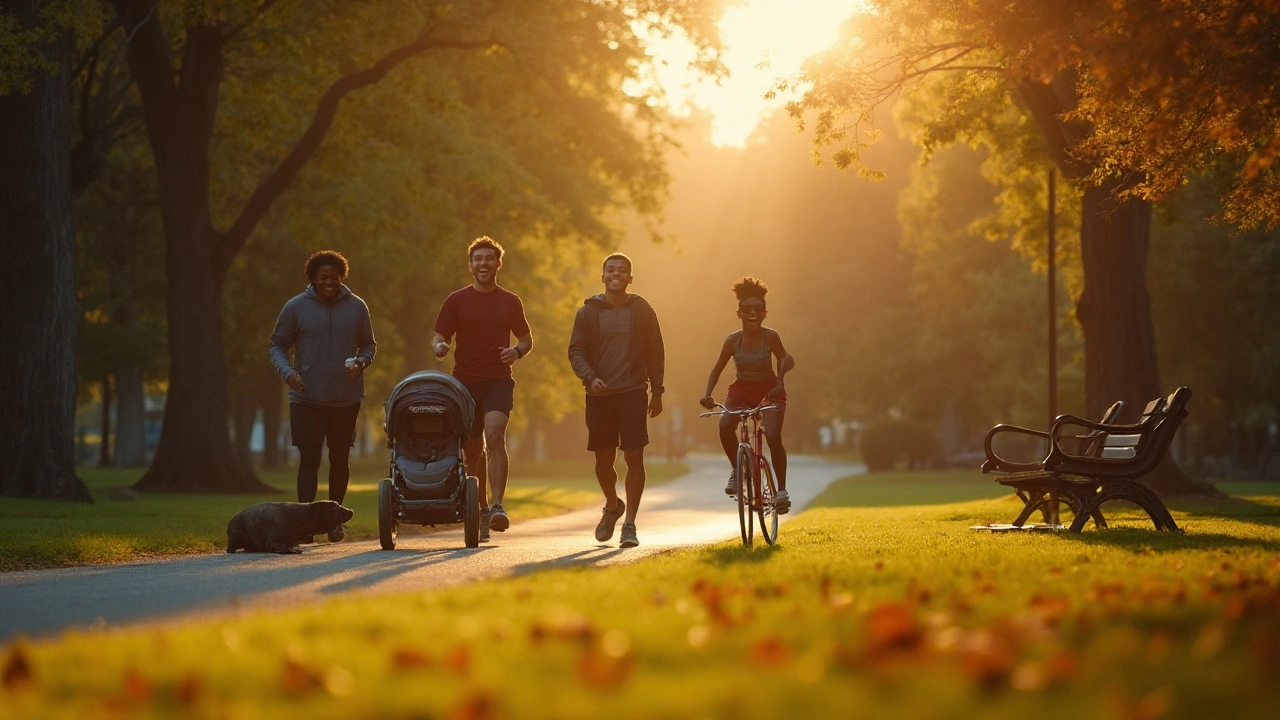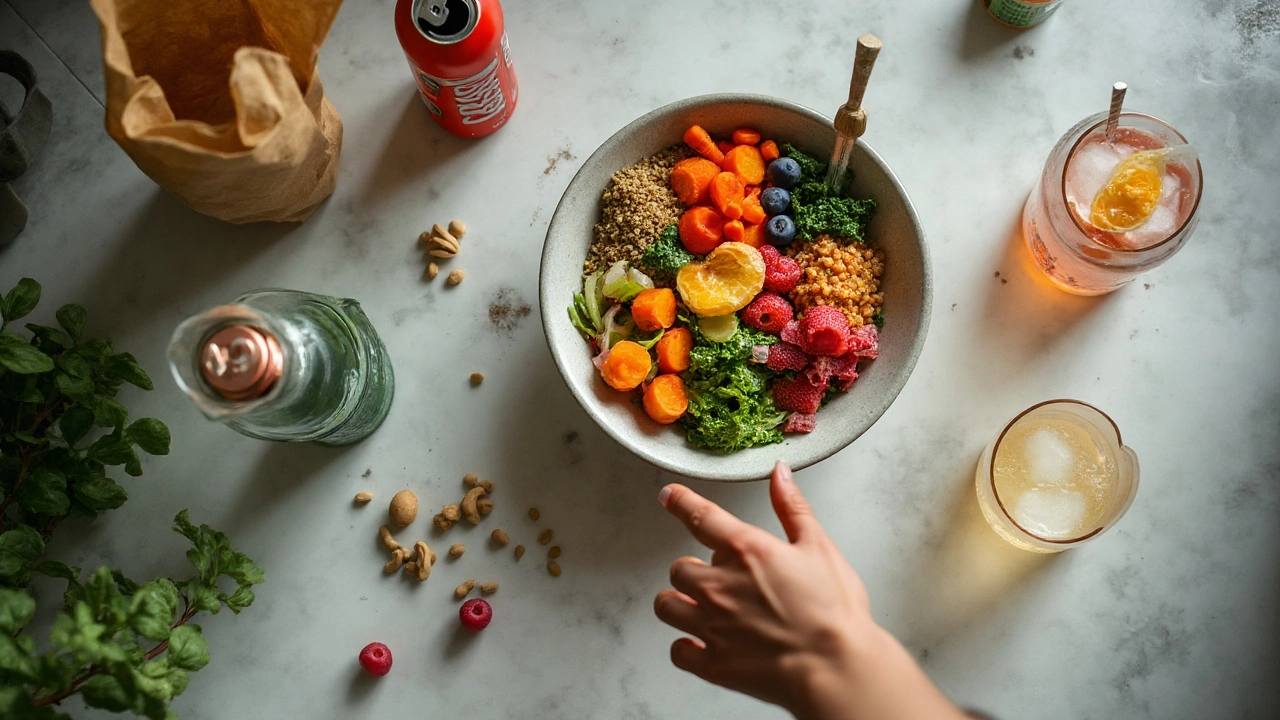
You don’t need a brutal juice cleanse, colonics, or a salty chug to feel “cleaned out.” If your goal is less bloat, easier poops, and a calmer belly, the fastest, safest path is a gentle reset that supports how your gut actually works. Expect lighter, more regular digestion within 48-72 hours-no bathroom emergencies, no starving.
- Hydrate first, then add fiber. Water moves the train; fiber fills it.
- Prioritise soluble fiber (oats, chia, psyllium) for calm, regular stools; add insoluble (veg, whole grains) as gas settles.
- Use fermented foods (yogurt/kefir, kimchi) and a daily walk to speed things along.
- Skip colonics and “salt water flushes”-they can dehydrate and harm your gut.
- Stop and see your GP if you’ve got severe pain, blood, fever, or no bowel movement >1 week.
Safe ways to “flush” your gut: a step‑by‑step plan
You clicked because you want a clear, no-drama plan for how to flush your gut without wrecking your day. Here’s exactly what to do, why it works, and when to tweak the dial.
What “flush” really means: You’re not scrubbing your colon; you’re restoring normal motility (movement), stool bulk, and fluid balance so waste moves out naturally. The big levers are water, electrolytes, fiber, movement, sleep, and stress downshifts.
Before you start (health check): If you have inflammatory bowel disease (IBD), bowel obstruction history, recent abdominal surgery, severe constipation plus vomiting, unexplained weight loss, or you’re pregnant-talk to your GP first. If you’re on medications that affect fluid balance (like diuretics) or GLP‑1s, ask about a personalised plan.
TL;DR game plan (48-72 hours):
- Hydrate smart: Aim 2.0-2.6 L of fluids daily (women ~2.1 L, men ~2.6 L from beverages; more in Brisbane heat). Start Day 1 with 500-750 ml water in the first 90 minutes.
- Add electrolytes if you sweat: In hot, humid weather or after exercise, use an oral rehydration solution (ORS) or a sports drink with sodium, or salt your food a bit more. Avoid if told to limit salt.
- Layer soluble fiber: Oats/chia/psyllium to form soft, easy-to-pass stools. Start small; increase daily if no cramps.
- Walk 20-30 minutes twice a day: Movement stimulates your gut. A calm pace beats a hard run when you’re gassy.
- Eat fermented foods: 1-2 serves/day (yogurt/kefir, sauerkraut, kimchi) to support a healthy microbiome.
- Cut bloat triggers for now: Big alcohol hits, ultra‑processed snacks, greasy takeaways, and large raw veg salads.
Day 0 (prep tonight): Soak 2 tbsp chia in 200 ml milk or a non‑dairy alternative; refrigerate. Set a 20‑minute walk reminder after breakfast and after dinner. Chill a sports drink if tomorrow’s hot.
Day 1 (reset day):
- Morning: 300-500 ml warm water soon after waking. Coffee or tea is fine if it doesn’t upset you. Breakfast: chia pudding or porridge made with rolled oats, topped with kiwi or pear. Add 1-2 tbsp of natural yogurt or kefir.
- Mid‑morning: 300 ml water or electrolyte drink (particularly if it’s a 30°C Brisbane day). Short stroll-10 minutes counts.
- Lunch: Brown rice or quinoa, canned lentils (rinsed), sautéed zucchini/capsicum, a squeeze of lemon, olive oil, and a few forkfuls of sauerkraut.
- Afternoon: Peppermint tea; a banana or a handful of berries. Walk 10-15 minutes.
- Dinner: Baked salmon or tofu, roasted pumpkin and carrots, a small side of steamed greens. If constipated, add 3-4 prunes or a pear for dessert.
- Evening: Magnesium citrate (if your GP says it’s okay) can help some people with constipation. Otherwise, chamomile tea and lights out on time-sleep loss slows gut motility.
Day 2-3 (build on the wins):
- Keep fluid steady. If stools are still hard, add a second soluble fiber serve (e.g., 1 tsp psyllium husk in 250 ml water with lunch). Start low to avoid cramps.
- Add gentle insoluble fiber: cooked veg, peeled apples, wholegrain toast. If you get gassy, pull back a little and focus on cooked/softer options.
- Keep moving: 7-10k steps/day or two 20‑minute walks.
- Fermented foods twice daily: yogurt/kefir at breakfast; kimchi/sauerkraut at lunch or dinner.
- If you haven’t had a bowel movement by Day 3 and you usually go daily, call your GP or pharmacist to discuss a gentle osmotic laxative (e.g., macrogol). Avoid stimulant laxatives as your first move.
Why this works: Soluble fiber forms a gel that softens stool and feeds microbes that produce short‑chain fatty acids-these support gut lining and motility. Insoluble fiber adds bulk and speeds transit. Water carries it all through. Fermented foods add live cultures. Movement triggers the enteric nervous system. A normal, comfortable stool looks like Types 3-4 on the Bristol Stool Chart.
What not to do:
- Skip colonics/colon hydrotherapy. Gastroenterology groups, including the Gastroenterological Society of Australia (GESA), warn about risks: perforation, infection, electrolyte imbalances, and microbiome disruption. There’s no good evidence these “detoxify” a healthy colon.
- Avoid salt water flushes. Rapid sodium loads can cause vomiting, dangerous sodium swings, and dehydration-worse if you have high blood pressure, kidney or heart issues, or you’re on certain meds.
- Don’t mega‑dose fiber suddenly. Jumping from 10 g/day to 35 g/day is a fast track to bloat. Increase by ~5 g/day and pair each increase with an extra glass of water.
Electrolyte tip for hot days: If you’re sweating (hello, Brisbane summer), use an ORS: per litre of clean water, dissolve 6 level tsp sugar and 1/2 tsp salt; sip across the day. Not for those on sodium restrictions or with kidney/heart disease-check with your GP first.

What to eat, drink, and avoid: menus, portions, and a quick checklist
Here’s a simple, Aussie‑friendly guide-food you can actually buy at Woolies, Coles, or the market, and meals you can cook after work when the dog’s giving you the “walk now” look.
Build your plate:
- Soluble fiber stars: oats, barley, psyllium husk, chia, flaxseed, pumpkin, sweet potato, cooked carrots.
- Insoluble fiber (add once gas settles): wholegrain bread, brown rice, skins of fruit/veg, leafy greens, bran.
- Prebiotics: greenish bananas, oats, legumes, onions/garlic (if IBS, reduce these at first), asparagus.
- Probiotics (fermented): natural yogurt, kefir, kimchi, sauerkraut, miso, tempeh.
- Hydration heroes: water, peppermint/ginger tea, ORS or light sports drink if you sweat a lot, broths.
Sample 2‑day plan (swap to suit taste and tolerance):
- Breakfasts: Rolled oats porridge with kiwi and kefir; or Weet‑Bix with milk and sliced pear; or chia pudding with berries.
- Lunches: Quinoa salad with chickpeas (rinsed), roasted pumpkin, rocket, lemon‑olive oil dressing, and kimchi; or brown rice, tuna, avocado, cucumber, sesame, and a side of sauerkraut.
- Dinners: Grilled chicken or tofu, roasted carrots and sweet potato, plus steamed green beans; or lentil bolognese over wholewheat pasta with grated zucchini.
- Snacks: Prunes (3-5), a banana, a small handful of nuts, yogurt with a drizzle of honey, miso soup.
Shopping list (gut‑reset edition): rolled oats, Weet‑Bix, psyllium husk, chia, flaxseed, brown rice or quinoa, canned lentils/chickpeas, prunes, pears, kiwi, bananas, pumpkin, carrots, zucchini, leafy greens, natural yogurt/kefir, kimchi/sauerkraut, olive oil, lemon, peppermint tea.
How much fiber do you actually need? The Australian Dietary Guidelines (NHMRC) set Adequate Intakes around 25 g/day for women and 30 g/day for men, with higher intakes linked to better bowel habits and heart health. Many Aussies average far less. Use this table to hit your target without guesswork.
| Food | Typical serve | Approx. fibre (g) |
|---|---|---|
| Rolled oats (porridge) | 1/2 cup dry (40 g) | 4 |
| Chia seeds | 2 tbsp (24 g) | 10 |
| Psyllium husk | 1 tsp (5 g) | 3-4 |
| Lentils, canned (rinsed) | 1 cup | 14-16 |
| Kiwi fruit | 2 medium | 4-5 |
| Prunes | 5 pieces (~50 g) | 3-4 |
| Wholegrain bread | 2 slices | 5-7 (varies) |
| Pear (with skin) | 1 medium | 5-6 |
Quick checklist (pin this):
- Water: 8-10 cups/day; more if sweating. Start with 300-500 ml in the morning.
- Soluble fiber: 2-3 serves/day (oats/psyllium/chia), increase slowly.
- Fermented foods: 1-2 serves/day (yogurt/kefir/kimchi/sauerkraut).
- Movement: walk 20-30 minutes after two meals.
- Sleep: aim for 7-8 hours; poor sleep slows gut motility.
- Stress dial-down: 5 minutes of deep breathing, box breathing, or a slow stroll with the dog. (Luna insists, so it happens.)
- Avoid this week: alcohol binges, deep‑fried takeaways, massive raw salads, sugar alcohols (sorbitol/xylitol), very spicy meals if they aggravate you.
Brisbane‑wise tips: Hot, humid days mean you’ll need extra fluid and sodium. I keep frozen lemon wedges to cool water fast. If you finish a sweaty walk with a salt crust on your skin, you’ve lost sodium-use a light sports drink or salty food with water.

FAQs, red flags, and what to do if it’s not working
Is a professional colon “flush” (colonic) ever a good idea? Not for “detox.” Gastro societies (including GESA) caution about risks: perforation, infection, electrolyte disturbances. Colon cleansing is only used for medical procedures (like colonoscopy) under clinical guidance. Your colon already does elegant housekeeping-support it; don’t blast it.
Can I just take a laxative? Short‑term, an osmotic laxative (macrogol, lactulose) can help stubborn constipation and is generally safer than stimulant laxatives. Talk to your GP or pharmacist, especially if you’re on other meds. Still fix fluids, fibre, and movement or the problem returns.
How soon should I feel better? Many people notice less bloat and an easier bowel movement within 24-72 hours. If you’re severely backed up, give the gentle plan 3-5 days. No movement by Day 3-5, or worsening pain, vomiting, blood, fever? Call your doctor.
IBS vs. IBD-does this apply to me? If you have IBS, start with cooked, lower‑FODMAP fibre (oats, chia, firm bananas, rice) and add fermenteds slowly. Monash University’s low‑FODMAP guidance is the gold standard for IBS flares. IBD (Crohn’s/UC) is different-work with your gastroenterologist; avoid self‑directed fibre pushes during flares.
What about probiotics or supplements? Fermented foods are a good first line. If you add a probiotic, choose a strain with evidence for your symptom (e.g., B. infantis 35624 for IBS). Psyllium has strong evidence for stool form and regularity, but start at 1 tsp/day and increase slowly with water. Magnesium citrate can help some with constipation-check with your GP if you have kidney or heart issues.
Is coffee helpful or harmful? Coffee can stimulate the gastrocolic reflex, which is why a morning brew nudges a bowel movement. If it gives you cramps or reflux, keep it mild or switch to tea while you reset.
Diarrhoea today, constipation tomorrow-what do I do? Aim for soluble fibre and fluids during loose days (oats, banana, rice, potatoes, psyllium), avoid greasy foods and alcohol, and use ORS if dehydrated. When things firm up, reintroduce more variety, veg, and walking.
Travel constipation? Hydrate on the plane, keep moving, eat a kiwi or prunes daily, and start 1 tsp psyllium with water once a day three days before you fly. Don’t rely solely on wine and pretzels at 35,000 feet.
On GLP‑1 medications and now constipated? This is common. Prioritise fluids, daily walking, cooked veg, and psyllium. If still stuck, ask your prescriber about adding an osmotic laxative. Don’t push huge salads on a slowed gut-that can worsen bloating.
Period‑related bloat? In the late luteal phase, progesterone slows motility. Go heavier on soluble fibre and water, lighter on salt and alcohol, and keep gentle walks. A warm pack helps cramps and can ease the urge.
How do I know I’m “done” flushing? You’re going regularly (most people are 3 times/week to daily), stools are comfortable (Bristol 3-4), bloating is mild, and you’re not needing emergency bathroom trips. That’s a healthy gut rhythm.
Red flags-don’t self‑flush, get help:
- Severe, worsening abdominal pain, persistent vomiting, fever, or blood in stool.
- Unintentional weight loss, anaemia, or a family history of bowel cancer with new bowel changes.
- No bowel movement for >7 days despite fluids/fibre, or you can’t pass gas.
Next steps and troubleshooting (choose your path):
- Bloated after adding fibre? Drop the dose by half. Use cooked veg and oats, not raw salads and bran. Add peppermint tea. After 3-4 calm days, inch fibre up again.
- Still constipated after 3 days? Confirm you’re drinking at least 2 L/day, walking daily, and adding 1-2 serves of soluble fibre. If yes, talk to your pharmacist about an osmotic laxative; book your GP if no improvement within a week.
- Loose stools after fermented foods? Reduce to 1 tbsp sauerkraut or 1/4 cup kefir daily and build slowly, or pause for a week and try again.
- Desk‑bound days: Set a timer to stand and walk for 3-5 minutes every hour. Post‑lunch, do a 10‑minute loop. Your gut loves rhythmic movement.
- Runner or heavy sweater (hello Brisbane summer): Add 300-500 ml electrolyte drink for every hour you sweat. Don’t cut salt aggressively on training days.
- Kids or pets disrupting sleep? Protect 15 minutes pre‑bed for a wind‑down: dim lights, screens off, warm shower. Sleep and gut motility are a team sport. (Ziggy the parrot will still heckle. He’ll live.)
Why you can trust this approach: It lines up with the Australian Dietary Guidelines (NHMRC) on fibre and fluids, GESA’s cautions against non‑medical colon cleansing, WHO‑style oral rehydration principles, and gastroenterology guidance on using soluble fibre and movement to normalise motility. The basics seem boring, but they’re what consistently works-safely.
If you want a gut that “flushes” itself-because it’s hydrated, fed, and moving-use this plan for a week, then keep the core habits. Your body does the rest.

